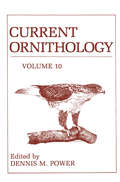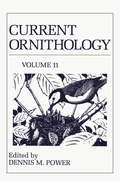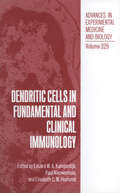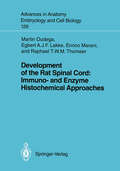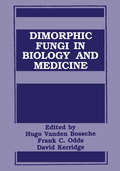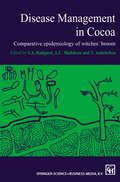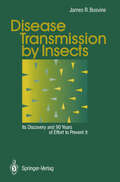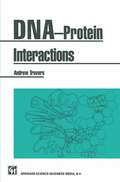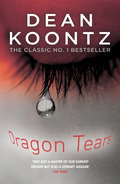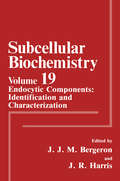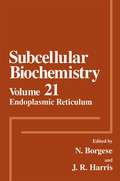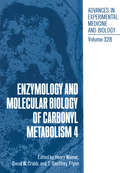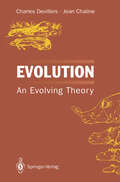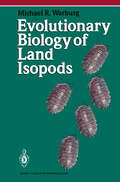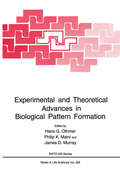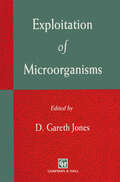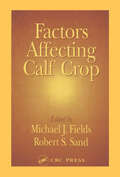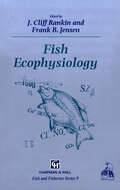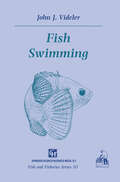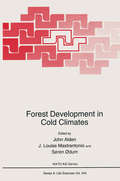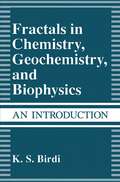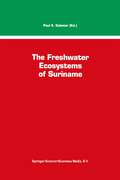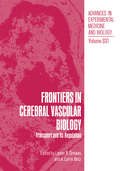- Table View
- List View
Current Ornithology: Volume 10 (Current Ornithology #10)
by D. M. PowerDetailing novel research methods, this compilation presents major advances in fundamental aspects of phylogeny, mating, parental care, the trophic structure of Raptor communities, demography, behavioral ecology, species diversity, and the evolution of avian ontogenies. The book also features the most extensive list of international references available on raptor diet and feeding behavior and nocturnality. Current Ornithology is the only English-language publication currently devoted exclusively to extensive reviews and synthesis of topics pertaining to all aspects of the biology of birds. Chapters fall under such diverse rubrics as ecology, evolution, behavior, phylogeny, behavioral ecology, anatomy and physiology, and conservation biology. All authors are leading authorities on their subjects, and each chapter is refereed by experts in the topics covered. Although all chapters focus primarily on birds, some topics, such as the social cognition of birds as compared to primates (Volume 13), have significant application to disciplines outside of ornithology. Current Ornithology aims to provide an accessible, up-to-date, accurate source of data and to contribute to conceptual generalization and unification across the biological sciences.
Current Ornithology: Volume 11 (Current Ornithology #11)
by Dennis M. PowerThis is the only English-language publication devoted exclusively to extensive reviews and synthesis of topics on the biology of birds. The current volume includes articles on sibling competition, predation and the limitation of bird numbers, and population trends in birds of eastern North America.
Dendritic Cells in Fundamental and Clinical Immunology (Advances in Experimental Medicine and Biology #329)
by Paul Nieuwenhuis Eduard W. A. Kamperdijk Elizabeth C. M. HoefsmitThese Proceedings contain the contributions of the participants of the Second International Symposium on Dendritic Cells that was held from the 1st to 25th of June 1992 in Amsterdam, the Netherlands. The First International Symposium on Dendritic Cells was organized as a Satellite symposium at the occasion of the 30th anniversary of the Japanese Reticuloendothelial Society by Dr. Y. Imai in Yamagata (Japan), in 1990. It was entitled "Dendritic Cells in Lymphoid Tissues," and focused primarily on the Interdigitating Cells (IDC), Epidermal Langerhans cells (LC) and Follicular Dendritic Cells (FDC) , from the point of view of human pathology. However, the concept of Dendritic Cell System, comprising the bone marrow derived IDC and LC but not the FDC, was based on animal experiments and mainly on in vitro experiments on isolated cells. In a report from the Reticuloendothelial Society Committee on Nomenclature in 1982, Tew, Thorbecke and Steinman had already characterized these different types of DC, but the gap between in vivo and in vitro function remained. In Amsterdam, the Symposium focused on the Role of Dendritic Cells in Fundamental and Clinical Immunology. First, recent developments in molecular biology of antigen presentation and cell biological aspects of signal transduction were discussed, in relation to the potential of DC to stimulate lymphocytes and to trigger their in vitro differentiation.
Development of the Rat Spinal Cord: Immuno- and Enzyme Histochemical Approaches (Advances in Anatomy, Embryology and Cell Biology #129)
by Martin F. Bach Egbert A.J.F. Lakke Enrico Marani Raph T.W.M. ThomeerThe studies described here were carried out in the Neuroregul ation Group, Department of Physiology, University of Leiden, the Netherlands. Over the last decade, this group, in close collaboration with the Department of Neurosurgery of the Academic Hospital of Leiden, has studied the development of the central nervous system from a neuroanatomical as well as a clinical perspective. During this period, the expression of several morphore gulators in the developing rat spinal cord was extensively investigated. Parallel studies focused on the development of the spinal cord fiber systems, which was studied by means of the intrauterine use of neuronal tracers. The main goal of these studies was to extend our knowledge about the (normal) generation of the spinal cord and to contribute to the under standing of clinical problems related to regeneration and degeneration in the mammalian central nervous system. The studies on morphoregulators, in particular, appeared to benefit two different scientific areas. Firstly, the correlation between morphoregulator expression patterns and known anatomy contributed to our knowledge about spinal cord development. Secondly, the correlation between morpho regulator expression patterns and known developmental processes may help to understand their precise function(s). This volume of Advances in Anatomy, Embryology and Cell Biology presents these particular studies on the development of the rat spinal cord performed over the last decade. As well as integrating the results of the tracer studies, this volume also provides an update on the development of the rat spinal cord.
Dimorphic Fungi in Biology and Medicine
by D. Kerridge F. C. Odds Hugo Vanden BosscheFungal dimorphism is a topic that sounds inherently too rarified to attract more than a specialist audience. Yet some 230 individuals representing an eclectic mixture of interests, from basic science to medical practice, gathered in Churchill College, Cambridge in Semptember 1992 for a meeting devoted only to this subject. The symposium was the fourth in a series "Topics in Mycology" to be jointly organized by the Janssen Research Foundation and the International Society for Human and Animal Mycology. The participants enjoyed a rich and varied diet of oral presentations and poster displays in the field of fungal morphogenesis. This book sets down in print the material presented at the dimorphism symposium. We think that the high quality of these papers conveys very well the flavor of what was an excellent meeting. The selection of contributions in this volume covers very wide ground indeed. Chapters devoted to some non-pathogenic fungi are included, because the scientific basis of morphological development belongs to the fields of cellular and molecular biology: it does not recognize the boundary imposed by considerations of virulence of a fungus for a human host. Yet morphogenetic change in those fungi that do cause human disease frequently appears to be a component of the pathological process: many important pathogens change from a hyphal form in the external environment to a round form in infected tissues. This relationship between dimorphism and pathogenicity is the point of contact between pure biology and medicine.
Disease Management in Cocoa: Comparative epidemiology of witches’ broom
by Rudgard Maddison AndebrhanThe Monograph deals with the conception, planning, implementation, results and conclusions of the International Witches' Broom Project (IWBP), which was set up in 1985 with the aim of producing an economic management system for witches' broom disease of cocoa. The contributions of the various sponsors, and the roles played by the participating organizations and scientists are described in the introductory chapter. Chapter 2 provides a review of what was, and what was not known from published literature about the cocoa witches' broom pathosystem in 1989. The scope of the project and the approaches used are covered in Chapter 3, while Chapters 4 to 13 report on the field studies themselves in detail. The recent appearance of witches' broom in the important cocoa area of Bahia in Brazil is described in Chapter 14, before disease management recommendations are summarised and future prospects considered in the closing chapters. The many man-years of field research in the IWBP in a total of six countries generated much useful information which was analyzed both in the individual countries and collectively. Even with a document of this size, certain information and analyses with less direct relevance to disease management had to be omitted. It is expected that more detailed treatments of certain aspects will emerge in scientific papers, and further analyses will be undertaken.
Disease Transmission by Insects: Its Discovery and 90 Years of Effort to Prevent it
by James BusvineAbout 100 years ago, it was dicovered that insects transmit grave, mainly tropical diseases - very much to the astonishment of the physicians of that time, who saw this as a new, possibly easy, way of eradicating the diseases by exterminating the vectors. For some years, DDT and other then new insecticides achieved great improvements, but subsequently serious setbacks emerged: insecticide-resistance and anxiety about toxicity to man and animals. In the past twenty years, serious efforts have been made tofind alternatives, with varying degrees of success.
DNA-Protein Interactions
by A. TraversOur understanding of the mechanisms regulating gene expression, which determine the patterns of growth and development in all living organisms, ultimately involves the elucidation of the detailed and dy namic interactions of proteins with nucleic acids -both DNA and RNA. Until recently the commonly presented view of the DNA double helix as visualized on the covers of many textbooks and journals - was as a monotonous static straight rod incapable in its own right of directing the processes necessary for the conservation and selective reading of genetic information. This view, although perhaps extreme, was reinforced by the necessary linearity of genetic maps. The reality is that the biological functions of both DNA and RNA are dependent on complex, and sometimes transient, three-dimensional nucleoprotein structures in which genetically distant elements are brought into close spatial proximity. It is in such structures that the enzymatic manipulation of DNA in the essential biological processes as DNA replication, transcription and recombination are effected - the complexes are the mediators of the 'DNA transactions' of Hatch Echols.
Dragon Tears: A thriller with a powerful jolt of violence and terror
by Dean KoontzThe events of one dark night have far reaching repercussions... Dean Koontz writes a gripping thriller of predator and prey in Dragon Tears. Perfect for fans of Stephen King and Harlan Coben.'The take-a-deep-breath ending alone is worth the price of the ticket' - PeopleHarry Lyon is a cop who embraces tradition and order. The biggest bane of his life is his partner, Connie Gulliver. Harry doesn't like the messiness of her desk, her lack of social polish or her sometimes casual attitude towards the law. 'Look, Harry, it's the Age of Chaos,' she tells him. 'Get with the times.'And when Harry and Connie have to take out a hopped-up gunman in a restaurant, the chase and shootout swiftly degenerate into a surreal nightmare that seems to justify Connie's view of the modern world. Shortly after, Harry encounters a filthy, rag-clad denizen of the streets, who says ominously, 'Ticktock, ticktock. You'll be dead in sixteen hours.' Struggling to regain the orderly life he cherishes, Harry is trapped in an undertow of terror and violence. For reasons he does not understand, someone is after him, Connie Gulliver and the people he loves. What readers are saying about Dragon Tears: 'With all his best stories [Dean Koontz] draws you in and makes the implausible seem plausible - this is one of his best''[Dean Koontz] combines poignancy and true psychological horror to bring home the plight of characters that you'll love and root for all the way''Another fantastic tale, written in such a way that you can hardly stop turning the pages'
Enzymology and Molecular Biology of Carbonyl Metabolism 4 (Advances in Experimental Medicine and Biology #328)
by Henry Weiner David W. Crabb T. Geoffrey FlynnThe Sixth International Workshop on the Enzymology and Molecular Biology of Carbonyl Metabolism was held outside of Dublin, Ireland at the end of June, 1992. Prof. Keith Tipton, Chairman of the Biochemistry Department at Trinity College, kindly agreed to host the meeting. On behalf of all of us who attended I wish to extend our sincere thanks to the whole Tipton family for making us feel so welcome in Ireland. It has been a decade since the frrst workshop was held in Bern, Switzerland. The scope of the meetings reflected somewhat the changes that have occurred in biochemistry during the past decade. At the first meeting primarily enzymes and their properties were discussed. At this last meeting many of the talks centered on gene regulation as well as more traditional aspects of enzymology and metabolism. During the past decade site directed mutagenesis to probe for the active site of an enzyme has become part of traditional enzymology; this was virtually unheard of at our frrst meeting. Many of the presenters now used this tool to study some aspect of structure and function of one of the three carbonyl metabolizing enzymes.
Every Living Thing: The Classic Memoirs of a Yorkshire Country Vet (All Creatures Great And Small Ser. #5)
by James HerriotThe fifth volume of memoirs from the author who inspired the BBC series All Creatures Great and Small During his decades spent as a country vet in Yorkshire, James Herriot has seen huge advances in medical science, technological leaps, and a world irrevocably changed by war. Yet some things have always stayed the same – gruff farmers, hypochondriac pet owners, and animals that never do quite what you expect them to. From a green young man in his first job in the 1930s, to an experienced veterinary surgeon, married with two children, James has spent his entire career among the people and animals of Darrowby. And there’s nowhere else he’d rather be. Since they were first published, James Herriot’s memoirs have sold millions of copies and entranced generations of animal lovers. Charming, funny and touching, Every Living Thing is a heart-warming story of determination, love and companionship from one of Britain’s best-loved authors.
Evolution: An Evolving Theory
by Charles Devillers Jean ChalineIs evolution predictible? Taking into account the results of such diverse disciplines of natural sciences as e. g. genetics embryology, ecology, palaeontology on the threshold of the coming century, the authors stretch out their ideas for discussing this question. Charles Devillers, biologist, and Jean Chaline, palaeontologist and geologist, developed a new assessment of the historic framework of evolution, based on their longterm experiences in scientific research, also including philosophical aspects to life. They aimed the book at a publicreceptive to problems of the origin and evolution of life and especially of mankind to teachers and scientists of various topics in the sciences of life, Earth and the Universe.
Evolutionary Biology of Land Isopods
by Michael R. WarburgAlready as a young boy, I used to walk with my late father, an ardent naturalist at heart, though to his regret not by profession, in the fields and woods on Mt. Carmel where we lived. My father, being largely an amateur ornithologist but also loving other vertebrates, was less inter ested in the little creatures(-the invertebrates) so abundant under stones. These were, more often then not, isopods which are particularly abundant in the Mediterranean region of northern Israel, and therefore not difficult to encounter (Fig. 1). Thus, my interest in the terrestrial isopods started at an early stage. Many years later, after graduating from the Hebrew University, Jerusalem, I worked as an assistant to my late friend and colleague, Professor Michael Costa, at the Teachers Seminary in Oranim. One day I found on my desk a copy of Edney's (1954) paper: Woodlice and the land habitat, which my friend left for me knowing of my interest in this group. Therefore, due to the stimulus of Edney's paper, and the many interesting questions it raised in my mind, I developed a lifelong interest in this amazing crustacean group. My research in the ecophysiology of this group followed to a large extent the directions formulated by Edney and Cloudsley-Thompson whose name will be mentioned throughout this book. I am also indebted to the many stimulating discussions with my friends and colleagues C. S. Crawford, K. E. Linsenmair, and E.
Experimental and Theoretical Advances in Biological Pattern Formation (Nato Science Series A: #259)
by Hans Othmer Philip Maini James D. MurrayThis volume contains the proceedings of the NATO ARW on 'Biological Pattern Formation' held at Merton College, University of Oxford, on 27-31 August, 1992. The objective of the workshop was to bring together a select group of theoreticians and experimental biologists to present the latest results in the area of biological pattern formation and to foster interactiqn across dis- plines. The workshop was divided into 5 main areas: (i) limb development, (ii) Dictyostelium discoideum, (iii) Drosophila, (iv) cell movement, (v) g- eral pattern formation. We thank all the participants for their contributions, enthusiasm, and willingness to collaborate. There was a genuine, open, and extremely fru- ful interaction between the experimentalists and theoreticians which made the workshop a success. We also thank The Welcome Trust for providing additional funding. The local organization fell mainly on Denise McKittrick and Beverley Bhaskhare at the Mathematical Institute, Oxford, and Jeanette Hudson and the staff of Merton College. We greatly appreciate their help and patience. We also thank Jonathan Sherratt, Wendy Brandts and Debbie Benson for helping out in the conference and for providing a happy welcome to parti- pants on a typically cold, wet and windy English summer day.
Exploitation of Microorganisms
by D.G. JonesMicrobiology may be described as one of the younger sciences with its history, as a precise subject, only dating as far back as Pasteur in the mid 1800s and his revelation both of the role of microorganisms in nature and their importance to human welfare. Medical scientists rapidly took up the challenge, with their area of microbiology flourishing and expanding almost in complete isolation from the rest of biology. We now know, of course, that microorganisms have always played an important, if not essential role, in the biosphere with fermented foods and beverages, plant and animal diseases and nutrient cycling foremost in their sphere of activities. Within the last twenty years, microbiology has received two enormous boosts with the developments in microbial genetics and genetic engineering probably being the most influential, and the greater awareness of pollution and environmental sustainability following a close second. In 1990, your editor had the privilege and pleasure of being elected as President of The Association of Applied Biologists in the United King dom and, as the topic for his three-day Presidential Conference, chose 'The exploitation of microorganisms in applied biology'. This meeting stimu lated great interest in a wide range of subject areas, from weed control to nematology, from plant breeding to plant pathology, from mushrooms to mycorrhiza. The proceedings of this meeting were published in Aspects of Applied Biology, No. 24, 1990.
Factors Affecting Calf Crop
by Michael J. Fields Robert S. SandFactors Affecting Calf Crop summarizes the latest information available from leading cattle physiologists and geneticists regarding factors known to influence the production of live calves at weaning. You get practical information on management techniques for improving reproduction efficiency in the herd. You'll also learn about the functioning of the reproductive system and how this may affect reproductive processes in the cow herd. Managers will benefit from a clearer understanding of the factors known to limit efficient reproduction, while veterinarians and other professionals who advise cattlemen will appreciate the substantial reference material and color photographs for defining cow condition scores. Color photographs are also used to illustrate the discussions of testicular thermographies and their applications. Other chapters in the book cover developments in improving reproductive performance of the replacement heifer, the brood cow, and the bull. Topics on reproduction include physiology/endocrinology, the use of growth promotants, genetics and physiological and economic considerations in selecting the age to breed heifers, heritability of fertility, length of the breeding season, prepartum and postpartum nutrition, nursing by the calf, cloning of embryos, and much more.
Factors Affecting Calf Crop: Biotechnology Of Reproduction
by Michael J. Fields; Robert S. SandFactors Affecting Calf Crop summarizes the latest information available from leading cattle physiologists and geneticists regarding factors known to influence the production of live calves at weaning. You get practical information on management techniques for improving reproduction efficiency in the herd. You'll also learn about the functioning of the reproductive system and how this may affect reproductive processes in the cow herd. Managers will benefit from a clearer understanding of the factors known to limit efficient reproduction, while veterinarians and other professionals who advise cattlemen will appreciate the substantial reference material and color photographs for defining cow condition scores. Color photographs are also used to illustrate the discussions of testicular thermographies and their applications. Other chapters in the book cover developments in improving reproductive performance of the replacement heifer, the brood cow, and the bull. Topics on reproduction include physiology/endocrinology, the use of growth promotants, genetics and physiological and economic considerations in selecting the age to breed heifers, heritability of fertility, length of the breeding season, prepartum and postpartum nutrition, nursing by the calf, cloning of embryos, and much more.
Fish Ecophysiology (Fish & Fisheries Series #9)
by J.C. Rankin Frank B. JensenAmong the fishes. a remarkably wide range of biological adaptations to diverse habitats has evolved. As well as living in the conventional habitats of lakes. ponds, rivers, rock pools and the open sea, fish have solved the problems of life in deserts. in the deep sea. in the cold antarctic. and in warm waters of high alkalinity or of low oxygen. Along with these adaptations, we find the most impressive specialisations of morphology, physiology and behaviour. For example we can marvel at the high-speed swimming of the marlins. sailfish and warm-blooded tunas, air-breathing in catfish and lungfish. parental care in the mouth-brooding cichlids and viviparity in many sharks and toothcarps. Moreover, fish are of considerable importance to the survival of the human species in the form of nutritious. delicious and diverse food. Rational exploi management of our global stocks of fishes must rely upon a detailed tation and and precise insight of their biology. The Chapman [.,. Hall Fish and Fisheries series aims to present timely volumes reviewing important aspects of fish biology. Most volumes will be of interest to research workers in biology. zoology. ecology and physiology but an additional aim is for the books to be accessible to a wide spectrum of non-specialist readers ranging from undergraduates and postgraduates to those with an interest in industrial and commercial aspects of IIsh and t1sheries.
Fish Swimming
by J.J. VidelerAmong the fishes, a remarkably wide range of biological adaptations to diverse habitats has evolved. As well as living in the conventional habitats of lakes, ponds, rivers, rock pools and the open sea, fish have solved the problems of life in deserts, in the deep sea, in the cold antarctic, and in warm waters of high alkalinity or of low oxygen. Along with these adaptations, we find the most impressive specializations of morphology, physiology and behaviour. For example we can marvel at the high-speed swimming of the marlins, sailfish and warm-blooded tunas, air-breathing in catfish and lung fish, parental care in the mouth-brooding cichlids and viviparity in many sharks and toothcarps. Moreover, fish are of considerable importance to the survival of the human species in the form of nutritious, delicious and diverse food. Rational exploitation and management of our global stocks of fishes must rely upon a detailed and precise insight of their biology. The Chapman & Hall Fish and Fisheries Series aims to present timely volumes reviewing important aspects of fish biology. Most volumes will be of interest to research workers in biology, zoology, ecology and physiology but an additional aim is for the books to be accessible to a wide spectrum of non-specialist readers ranging from undergraduates and postgraduates to those with an intrerest in industrial and commercial aspects of fish and fisheries.
Forest Development in Cold Climates (Nato Science Series A: #244)
by John Alden J. Louise Mastrantonio Soren ØdumAs forests decline in temperate and tropical climates, highly-developed countries and those striving for greater economic and social benefits are beginning to utilize marginal forests of high-latitude and mountainous regions for resources to satisfy human needs. The benefits of marginal forests range from purely aesthetic to providing resources for producing many goods and services demanded by a growing world population. Increased demands for forest resources and amenities and recent warming of high latitude climates have generated interest in reforestation and afforestation of marginal habitats in cold regions. Afforestation of treeless landscapes improves the environment for human habitation and provides for land use and economic prosperity. Trees are frequently planted in cold climates to rehabilitate denuded sites, for the amenity of homes and villages, and for wind shelter, recreation, agroforestry, and industrial uses. In addition, forests in cold climates reduce the albedo of the earth's surface in winter, and in summer they are small but significant long-lived sinks for atmospheric carbon dioxide. Finally, growth and reproductive success of forests at their geographic limits are sensitive indices of climatic change. As efforts to adapt forests to cold climates increase, however, new afforestation problems arise and old ones intensify. Austral, northern, and altitudinal tree limits are determined by many different factors. Current hypotheses for high-latitude tree limits are based on low growing-season temperatures that inhibit plant development and reproduction.
Fractals in Chemistry, Geochemistry, and Biophysics: An Introduction
by K.S. BirdiIn this introductory text, Dr. Birdi demonstrates experimental methods and analyses of fractal dimensions in natural processes. In addition to a general overview, he discusses in detail problems in the fields of chemistry, geochemistry, and biophysics. Both students and professionals with a minimum of mathematics or physical science training will learn to find and model shapes and patterns from their own everyday observations.
The Freshwater Ecosystems of Suriname (Monographiae Biologicae #70)
by P. E. OuboterSince the limnological research on the man-made Brokopondo Reservoir in the 'sixties, numerous data have been collected on the ecology of Surinam rivers and swamps. This book is a compilation of these data: it is the first comprehensive survey of the aquatic ecology of one of the peripheral areas of Amazonia. The geomorphology of the country, situated on the Guyana Shield, is the main factor determining the limnological properties of rivers and creeks. This results in an overall picture that is quite different from Amazonia. The emphasis of The Ecosystems of Suriname is on the living aquatic resources, including aquatic and swamp vegetation, phyto and zooplankton, macroinvertebrates, fish, amphibians, reptiles and mammals. Although most of Suriname is still in a pristine state, the human impact on fresh waters is considerable in those areas of rapid economic development, emphasizing the necessity of conservation measures, specially tailored for aquatic ecosystems. The Ecosystems of Suriname is a valuable acquisition for all scientists, environmental managers and others interested in tropical aquatic ecology.
Frontiers in Cerebral Vascular Biology: Transport and Its Regulation (Advances in Experimental Medicine and Biology #331)
by Lester R. Drewes A. Lorris BetzDuring the past three decades, the cerebral vasculature and its role in blood-brain transport has been an increasingly active area of investigation and learning, particularly from an anatomical and physiological point of view. However, much less is known at the molecular and cellular level about the blood-brain barrier especially regarding the macromolecules responsible for transport, the roles played by vascular wall components (endothelial cell, pericyte, smooth muscle, basement membrane), and the mechanisms regulating brain vascular-specific protein expression and their molecular alterations during development and disease. Fundamental questions still unanswered include: What are the molecular constituents of brain endothelial cell tight junctions? What are the membrane proteins responsible for transport of specific substrates? What are the molecular signals that cause glucose transporter gene expression to be 20 to 100 times greater in brain endothelial cells in vivo than in vitro? What roles do pericytes, smooth muscle cells and basement membrane have in establishing or maintaining blood-brain transport characteristics? Are brain vascular transport systems responsible for edema following injury? Are transporter systems regulated via receptor-mediated events? Do hormones or neuromodulators regulate transporter expression? What is the molecular mechanism by which plasma proteins enter the extravascular space? Are transporters asymmetrically distributed between the luminal and abluminal endothelial cell membranes? Can prodrugs or pharmacologic agents be designed as substrate analogs and be delivered to the central nervous system via existing transporters or receptors? Can new and beneficial transporters be introduced into the brain vasculature?
